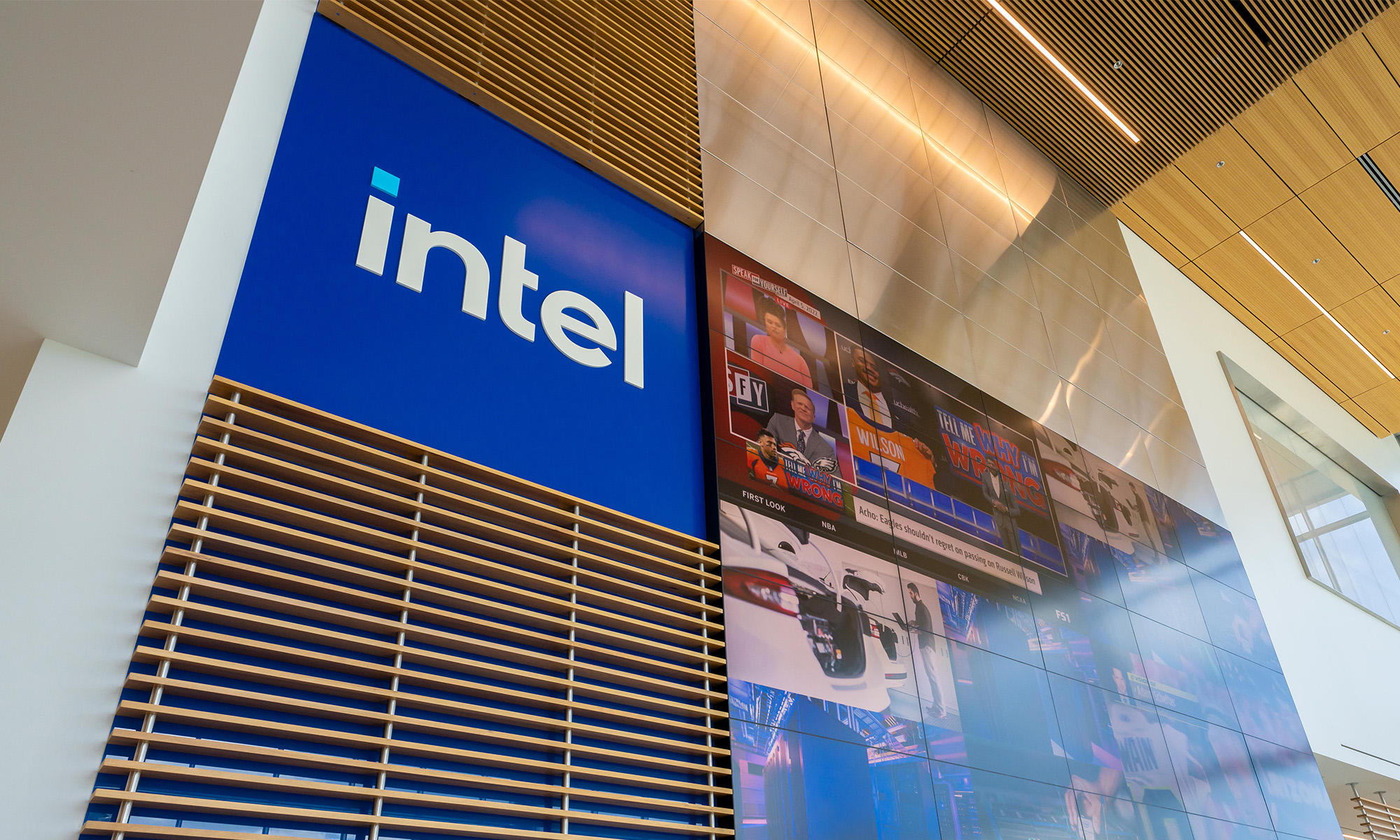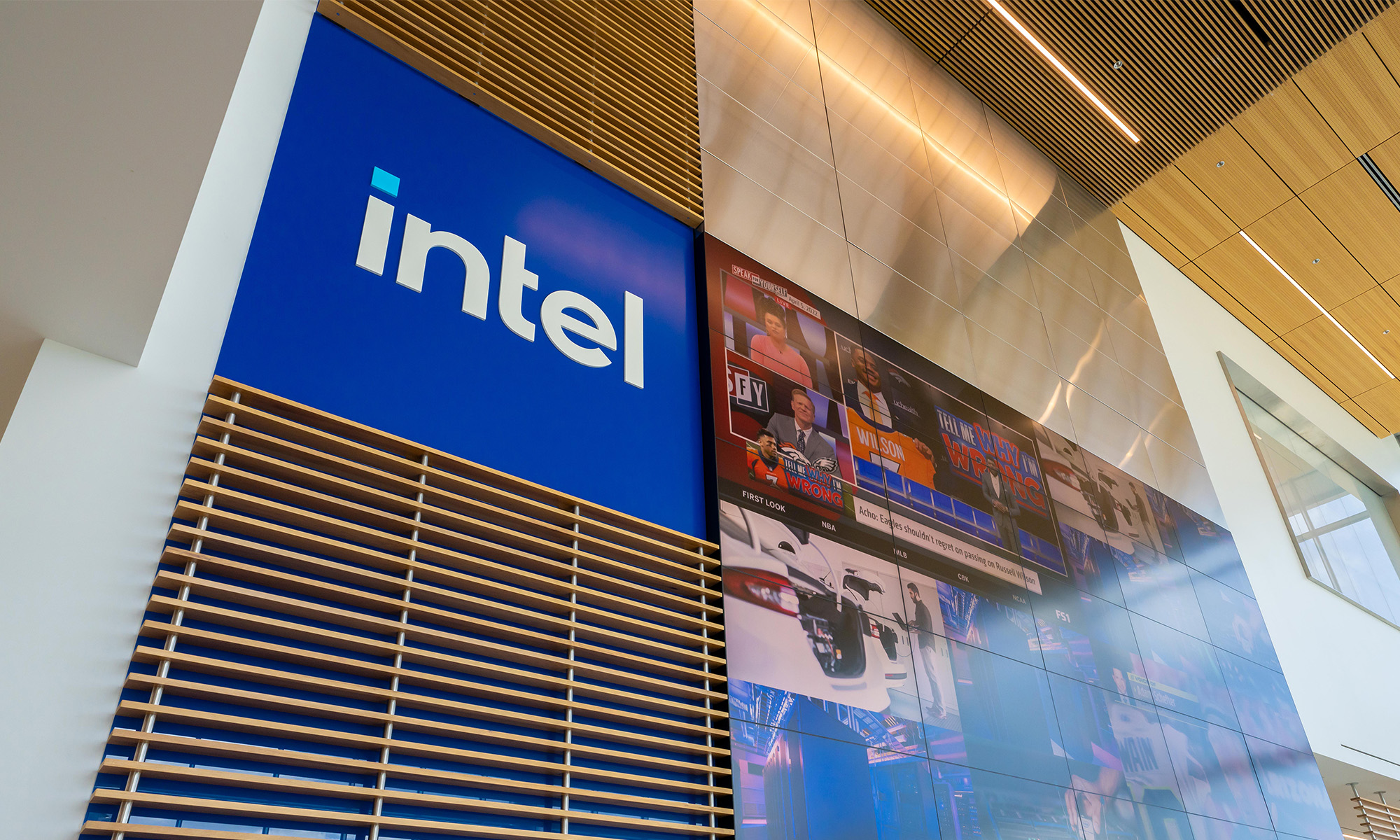Chip giant Intel (INTC 0.60%) blew away expectations when it reported its results for the third quarter of 2018, with revenue and earnings per share (EPS) coming in well above the high ends of the guidance ranges management issued back in July. The company also raised its revenue and non-GAAP EPS outlook for the year for the third time in three quarters, to $71.2 billion and $4.53, respectively, up from $69.5 billion and $4.15.
Intel also revised its free cash flow (FCF) forecast to $15.5 billion, a bump up of $500 million from the midpoint of its prior guidance.

Image source: Intel.
If you're an income-oriented investor -- Intel's current dividend yield is, after all, a respectable 2.63% -- then you might be wondering what the company's strong financial performance could mean for its dividend. Let's take a close look.
Reviewing Intel's dividend policy
First, it's worth remembering that back in February 2017, Intel's CFO (and now, interim CEO) Bob Swan said this about the company's dividend policy: "Our intentions are to grow our dividend in line with non-GAAP earnings growth. Our desires are to keep that around 40% of our free cash flows."
The last time Intel updated its dividend was in January 2018, which was also when it issued the first revision of its financial guidance for 2018. The dividend was raised from $1.09 per share on an annualized basis to $1.20 per share -- a 10% increase. The growth of the dividend was significantly lower than the 28% non-GAAP EPS expansion that the company achieved in 2017, but well ahead of the roughly 2.6% EPS growth that it had projected for 2018.
Let's look at the dividend obligation another way. Intel's share count at the end of 2017 was 4.683 billion. Assuming that share count, and a dividend of $1.20 per share, Intel would be on the hook for about $5.62 billion in dividends. At the end of 2017, the company had guided for 2018 free cash flow of $13 billion, so its dividend payments for the entirety of 2018 -- assuming a flat share count and the original FCF guidance -- would have made up about 43.2% of free cash flow, a little ahead of Intel's "desires."
With that in mind, we can look at what kind of dividend increase Intel shareholders might expect for calendar year 2019.
A few perspectives
If Intel simply grew the dividend at the same rate as its non-GAAP earnings per share, we'd be looking at a dividend increase of roughly 31% to about $1.57 per share on an annualized basis. Remember, though, that Intel is guiding for $15.5 billion in free cash flow for the year, which works out to around $3.33 per diluted share. A dividend of $1.57 per share would be good for a little over 47% of the company's expected 2018 FCF generation -- solidly above its 40% ambition.
At the same time, if Intel were to boost its dividend while keeping it at 40% of its 2018 free cash flow, the dividend would be about $1.33 per share -- a 10.8% jump.
To be blunt, I think if Intel limited the calendar-year 2019 dividend to 40% of its 2018 free cash flow, the increase would be underwhelming -- especially considering the kind of EPS growth the company is set to turn in by year end. Also, Swan's claim that "[as] we look forward to 2019, we expect to deliver another record year for the company" suggests further revenue and EPS growth next year.
On top of that, Swan said on the organization's earnings call in July that Intel is "intensely focused on closing the gap between free cash flow and EPS and expect[s] to make more progress next year."
Still, Intel might not want to push the dividend too far above 40% of 2018 free cash flow.
Ultimately, I think Intel will deliver a healthy dividend boost to its shareholders -- something better than 10.8%, but probably not as high as 31%. Back in January, the company was willing to amplify its dividend to a level greater than 40% of the free cash flow that it expected to generate in 2018. If Intel raised its dividend to, say, 43.2% of its 2018 free cash flow (the same percentage of FCF that the current dividend would have been, had Intel merely met the midpoint of its January guidance), the company would end up with a payout of about $1.44 per share. That's a healthy 20% increase. We'll know exactly what Intel ends up doing when it reports its earnings results in January.






